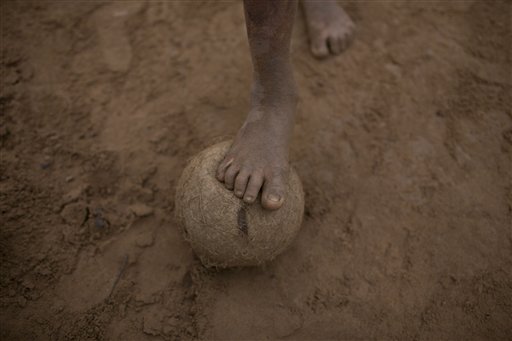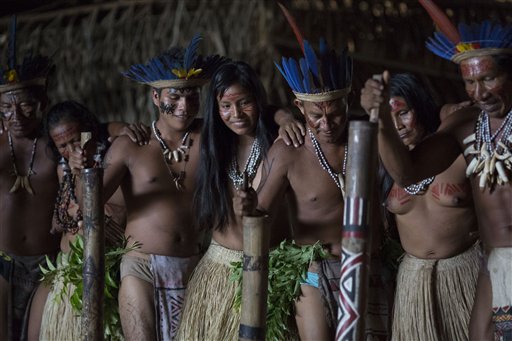
ALDEIA INDIGENA TATUYO, Brazil — At the sound of an approaching boat, the people of this river village run out to greet their visitors, feather headdresses bobbing, loincloths and grass skirts rustling. Riding atop two of the women’s heads, baby monkeys grab fistfuls of hair as they clutch on for dear life.
A 40-minute ride up the Rio Negro from Manaus, the people of Aldeia Indigena Tatuyo are far removed from the global spectacle taking place in that World Cup host city. Here, amid the exuberant vegetation of the Amazon rainforest, two worlds meet, smile at one another and snap souvenir photos.

The community of thatched palm roofed houses is home to nine families who moved to the riverside plot some 15 years ago from deep inside the rainforest, near Brazil’s border with Colombia. The villagers lead a hybrid life, maintaining the ancestral traditions of their assorted tribes while enjoying some of the advantages of urban life.
They hunt wild pigs, deer, the large rodents known as capybaras and other forest animals. They fish in the inky waters of the Rio Negro River and grow manioc and other sustenance crops.
Visits by outsiders provide supplemental income, and they hope that before World Cup play wraps up in Manaus, with Honduras to face Switzerland on Wednesday, some of the international soccer fans will come to glimpse their way of life.
While they normally wear the shorts, T-shirts and flip-flops that are standard fare throughout Brazil, the villagers change into their ceremonial finest to receive tourists. The men and boys don loincloths embellished in the back with bunches of freshly cut leaves and rattling anklets made from hollow seeds. The women and girls wear graceful skirts of dried grass.

Everyone wears graphic face paint that melts with sweat during the aerobic ceremony of chants and rhythmic dances. The celebration is held in the village’s central building, a dark lodge infused with the smell of smoke, and visitors snap away madly with their cameras while the more outgoing join in the dancing, much to the children’s amusement.
Other visitors try to coax the baby monkeys off their owners’ heads and onto their own, with extremely limited success. Sometimes visitors join in the high-adrenaline, co-ed soccer matches that are the afternoon entertainment of choice for the villagers.
After about an hour, the tourists pay a small fee, generally ranging from about $5 to $10 a person, depending on the size of the group, and hop back aboard their boat.
“It’s nice to have visitors,” said Cecilia Godinho, a Guanano tribeswoman whose husband founded the village after accompanying an ailing relative to the hospital in Manaus. “We learn from them and I hope they learn from us, too.”
RELATED STORIES
Brazil sky-high prices shock World Cup tourists
Love, sex and football: A Brazilian extravaganza awaits
Brazil takes vacation time to new level for World Cup
Brazil fights sex tourism, child prostitution ahead of World Cup








































